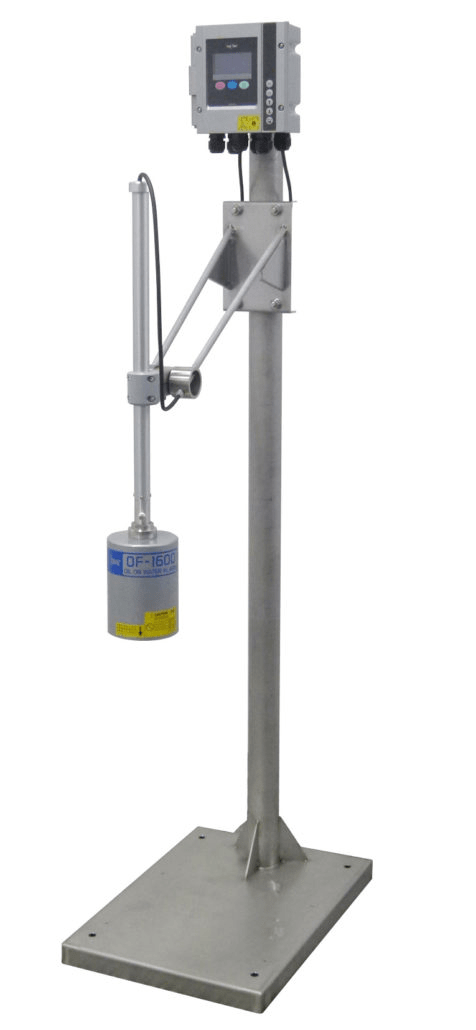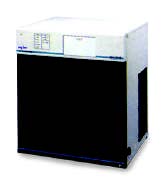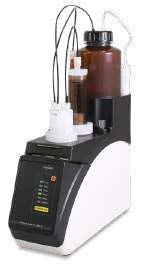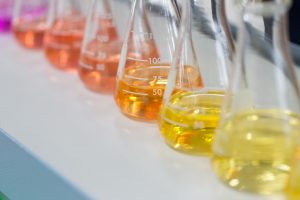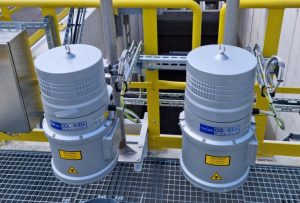The applications of titrators are wide-ranging, as they are essential laboratory devices for the quantitative analysis of chemical substances. They enable precise determinations of concentrations in solutions and are an indispensable tool in numerous industries. Whether in the pharmaceutical industry for the exact determination of active ingredients, in the food industry for quality control, or in environmental analytics for monitoring water quality – titrators ensure reliable measurements and high safety standards.
Modern titrators offer a variety of functions that ensure high accuracy and efficiency. Devices such as the AUT-801, for example, allow simultaneous titrations on two separate channels and can be expanded with various electrodes and measuring accessories. Depending on the area of application, different types of titration such as neutralization titration, oxidation-reduction titration, precipitation titration, chelatometry, or non-aqueous titrations are used. Precise control via a user-friendly interface facilitates handling and ensures consistent measurement results.
1. Pharmaceutical Industry
In the pharmaceutical industry, accurate analysis of drugs is crucial. The AUT-801 is particularly used here for determining the pH value of solutions to ensure the stability and efficacy of medications. For instance, acid-base titration enables the precise dosing of antacid medications. With optional electrodes such as the pH composite electrode GST-5841C or the ORP composite electrode PST-5821C, various active ingredients can be efficiently determined.
2. Food and Beverage Industry
In the food industry, the AUT-801 plays a crucial role in quality assurance. It measures the acid content in fruit juices and wines to control their taste and shelf life. The determination of salt content in processed foods is another application field, supported by the conductivity titration unit FUT-8040. Additionally, the fat content in dairy products can be analyzed using precise endpoint detection.
3. Chemical Industry
In the chemical industry, there are various applications for titrators. With the silver composite electrode ELX-006, precipitation titrations can be performed to determine chlorides. The possibility of simultaneous titration of multiple samples is facilitated by the rotatable TTT-710 Turntable, which increases the degree of automation and efficiency of the device. The purity of chemicals, such as sulfuric acid, can also be checked through precise redox titrations.
4. Environmental Analytics and Water Treatment
Titrators play a central role in environmental analytics, especially in monitoring water bodies. The AUT-801 enables the determination of chloride content in wastewater as well as oxygen consumption measurements to assess the biological activity of a water body. With the automatic sampling device AST-3210, measurements can be carried out efficiently. This is just one of the applications of titrators in environmental analytics.
5. Oil and Petrochemical Industry
In the petroleum and petrochemical industry, the AUT-801 is used to analyze acid and base contents in lubricants to ensure their longevity. The sulfur content in crude oil products can be determined using the potentiometric titration unit FUT-8050. The oxidation stability of fuels is also optimized through simultaneous titrations to make engines more efficient.
6. Cosmetics and Personal Care Industry
The cosmetics industry uses the AUT-801 for quality control of their products. The determination of the acid number in creams and lotions is crucial for their skin compatibility. Likewise, the moisture content in cosmetic formulations is analyzed to ensure durability and consistency. Thanks to the photometric titration unit FUT-8010, which is equipped with various filters for different substances, preservatives can also be accurately detected.
Conclusion
Titrators like the AUT-801 are indispensable measuring instruments that ensure accuracy and safety in a variety of industries. Through its versatile expansion options, including various electrodes, sampling devices, and titration units, this device offers the highest precision and efficiency. It fulfills all application areas of titrators while remaining cost-effective. Companies benefit from improved process monitoring, optimized procedures, and compliance with regulatory requirements.

